Indonesia’s spectacularly rich cultural heritage spurs Jakarta-based Rafael Miranti Architects toward sensitive new expressions of tradition. An equal driver is the improvement of building standards and more sustainable, regenerative approaches.

April 21st, 2020
The INDE.Awards celebrates the best in projects and practices across the region and our four Prodigies of 2020 are all truly outstanding. Each has an inspiring story to tell – who they are, how they came to design, why they chose their profession, and what working in the architecture and design community means to them.
Each story is unique as written by the architects and designers in their own words. It is a pleasure to share their journeys with you.
Here, Rafael Miranti Architects Principal Architect Rafael Arsono and Managing Director Margareta Miranti tell us about their progressive vision for design and architecture in Indonesia and why they established their Jakarta-based studio.
We had always wanted to make some form of contribution to our country. In Indonesia, design is often not fully considered and utilised as a problem-solving approach. The infrastructure for our design industry is still developing and the idea of using design as a tool for progress is still something that you find on very rare occasions.
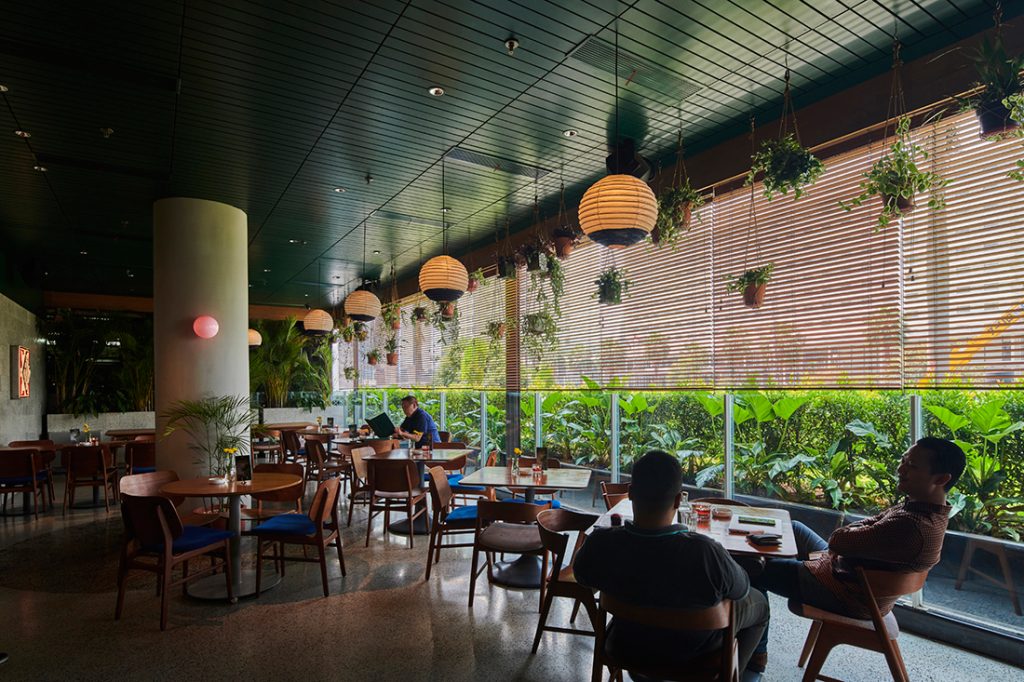
Mother Monster at Plaza Indonesia (2017, in collaboration with Sashia Rosari and Takeo Sugamata). Photo by Arti Pictures (William Sutanto)
This context is challenging yet exciting for us, which also spurs us in to believing that we can design almost anything here. We want to create functional, timeless, and sustainable built environments at any scale – whether it is an interior space, architectural, or taking part in master-planning a large site. We truly believe that good design belongs to the public, and that is essentially what encouraged us to establish our studio.
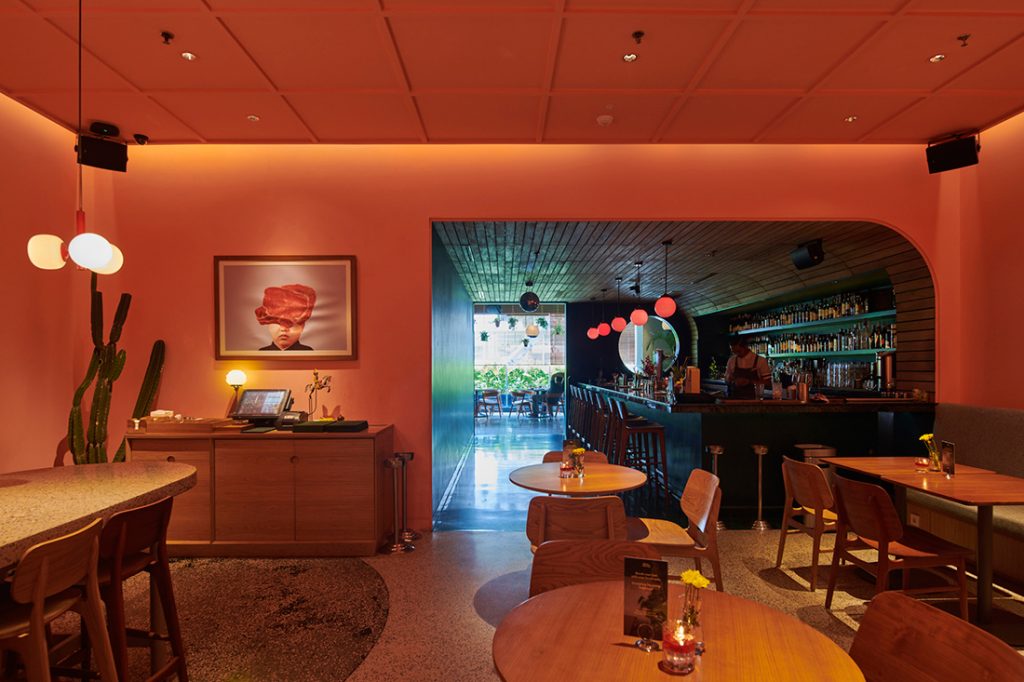
Mother Monster at Plaza Indonesia (2017, in collaboration with Sashia Rosari and Takeo Sugamata). Photo by Arti Pictures (William Sutanto)
As mentioned earlier, due to the lack of constraints in design and building regulations in our country, we realised that as designers we have an important responsibility to be as well informed as we could be in order to provide the best solutions. Our approach has always been to first and foremost to understand the characters of each individual client as well as the site that we will be working on. We believe that design is a collaborative process that also includes our clients. It is not just between those in the design trade.
We try to distill the essence of the information we have gathered and use it as a foundation for our design concept. As the project develops further, this foundation of knowledge will become our main guideline when making any design decisions. By using this process we hope that the end result can be impactful, not just for the clients or end users but also to the surrounding neighbourhood.

Private Villa in Ungasan, Bali (2017). Photo by Putu Adi Widiantara
In our eyes, design is fundamentally about problem solving. To help resolve issues with simple upgrades or subtle refinements can be just as rewarding to us as designing an innovative new building. This can be one of the ways for designers to practice more sustainably.
In addition, we are always keen to showcase local materials and craftsmanship whenever it suits the context of the project. We believe that good design does not necessarily require the most advanced techniques or newest innovative materials. We value good, honest unpretentious solutions for everyday life, and not creating trend-driven design outcomes. This has always been our deepest core value as designers.
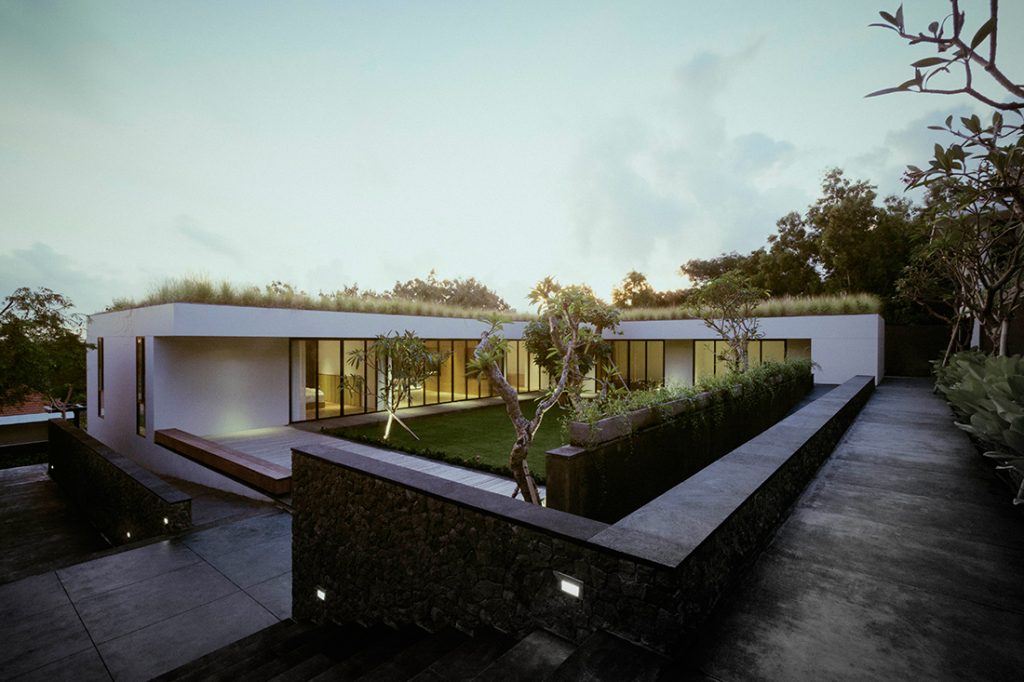
Private Villa in Ungasan, Bali (2017). Photo by Putu Adi Widiantara
For the years ahead, we see ourselves increasingly working on projects that have more direct impact on the public, in particular those located in regional or rural areas outside of Jakarta. We feel that being part of such projects will allow us to gain unique experiences in understanding our very own local cultures. There are rich traditions in local craftsmanship in our country that we would love to incorporate innovatively in our own projects. By doing so we hope that we can help to preserve and promote our culture further.
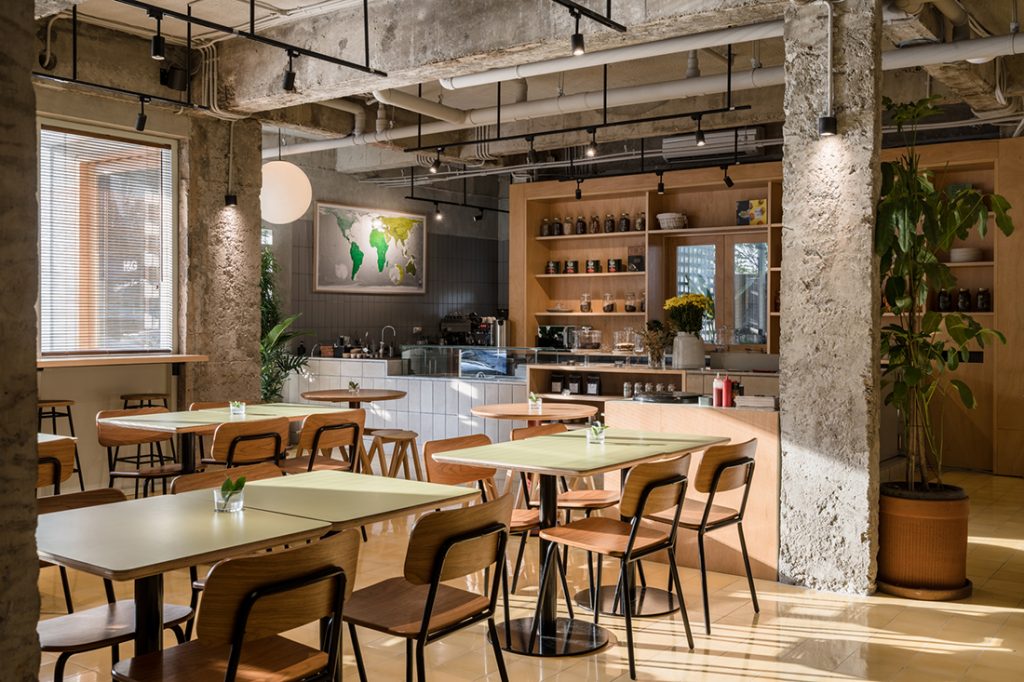
Hunter & Grower (2019, in collaboration with Sashia Rosari). Photo by Sefval Mogalana
We hope to see more inspiring designs that foster positive change in the world. Especially in our region, we would like to see projects that encourage cultural preservation. We also hope to see more innovations and developments that focus on reducing environmental impact. The Indo-Pacific region is rich in extraordinarily diverse culture, tradition and heritage that provides designers with limitless inspiration. This is what differentiates our region from the rest of the world. We believe that by deepening our knowledge on these rich diversities, naturally unique design identities will emerge, old traditions will be preserved while new ones evolve, and exciting innovations will flourish from our region.
We are excited to see innovative ways in which traditional construction methods or design elements can combine with new technologies. This may result in innovative new materials and techniques that are more efficient and environmentally responsible.
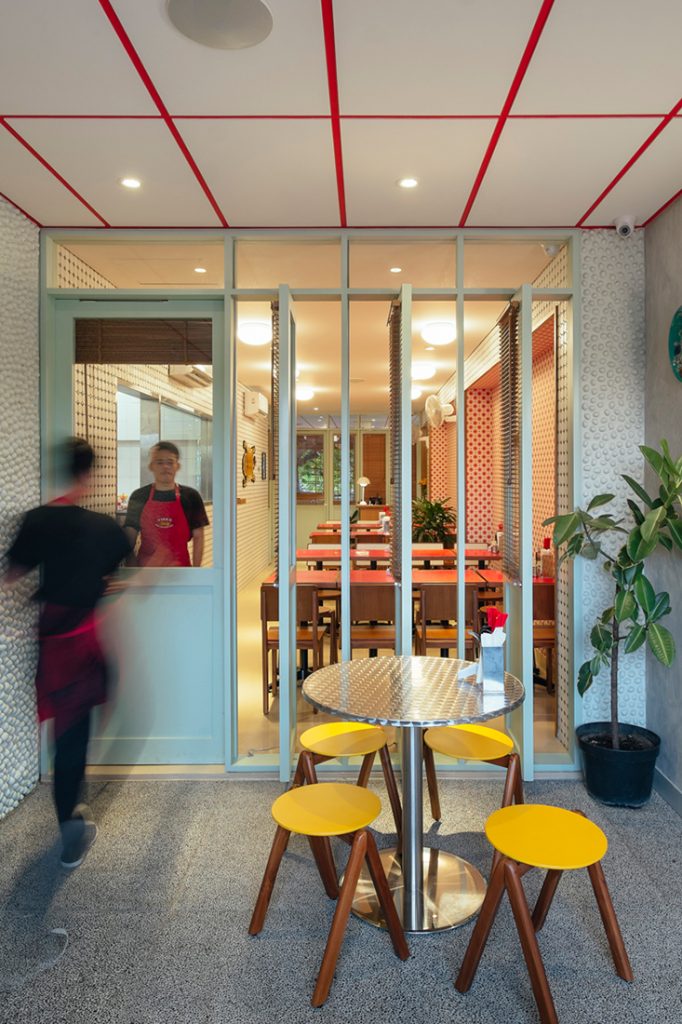
Bubur Cap Tiger (2019, in collaboration with Sashia Rosari). Photo by Liandro Siringoringo
We hope to see a more collective push from all industry stakeholders: architects, designers, policy makers, clients and construction-relevant groups to act on the climate emergency. Our national building standards require amendments to champion more sustainable regenerative methods. As examples, we need to continually re-evaluate building materials in terms of carbon efficiency, and create policies that provide incentives to encourage clients to reuse existing buildings rather than constructing new ones.
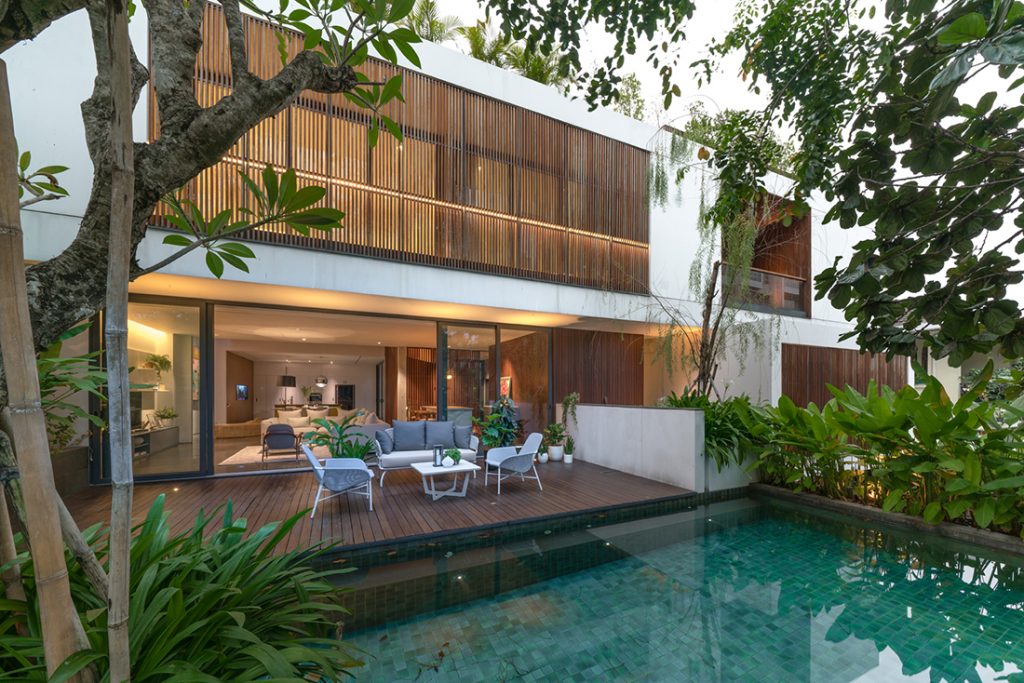
Private House in Permata Hijau (2016). Photo by Sefval Mogalana
In addition, our archipelago nation consists of hundreds of different ethnic groups, each one rich in cultural heritage. For us personally, progressiveness in our industry is about bringing forward these local traditions and cultures into current contemporary settings. We understand that using heritage or historical elements as design inspirations has to be done in the most respectful and sensitive manner. We want to avoid shallow interpretations of these important heritages in our designs and not just use them as mere decorative elements. Enthusiasm for this cultural preservation through design is what we hope to see progressing in our industry in the future.
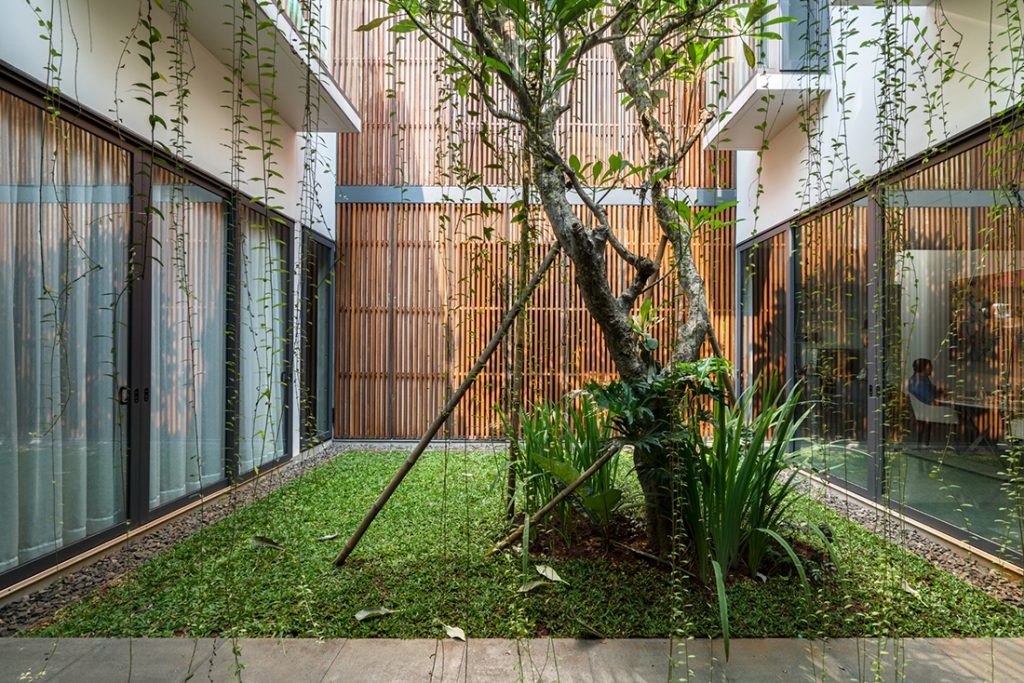
Private House in Permata Hijau (2016). Photo by Sefval Mogalana
Top image: Rafael Arsono and Margareta Miranti. Photo by Chris Bunjamin.
INDESIGN is on instagram
Follow @indesignlive
A searchable and comprehensive guide for specifying leading products and their suppliers
Keep up to date with the latest and greatest from our industry BFF's!
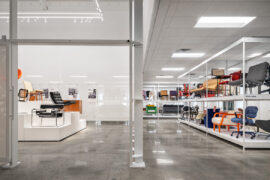
The undeniable thread connecting Herman Miller and Knoll’s design legacies across the decades now finds its profound physical embodiment at MillerKnoll’s new Design Yard Archives.
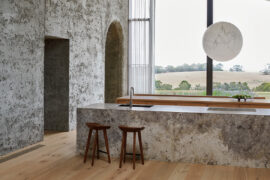
The INDE.Awards 2025 has named House on a Hill by Leeton Pointon Architects and Allison Pye Interiors as the winner of The Interior Space category, presented by Tongue & Groove. This multigenerational country home on Bunurong Country redefines residential architecture and design with its poetic balance of form, function, and sanctuary.
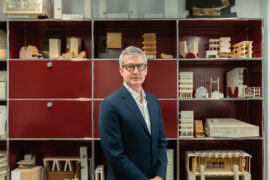
Leading by design, Erik L’Heureux has recently taken the helm of Monash University’s Department of Architecture, and so a new and exciting journey begins for both L’Heureux and the University.
The internet never sleeps! Here's the stuff you might have missed
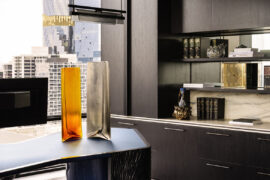
Mim Design and Konstance Zaharias collaborate to design an interior for a unique context: the chambers of a King’s Counsel in Melbourne.
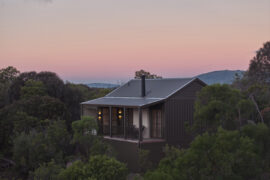
In what is already a peaceful idyll on the Mornington Peninsula, Kate Walker has crafted an intimate retreat with new villas for overnight stays at Alba.

Leading by design, Erik L’Heureux has recently taken the helm of Monash University’s Department of Architecture, and so a new and exciting journey begins for both L’Heureux and the University.
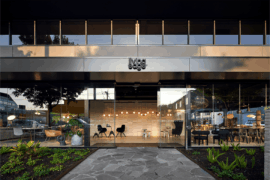
For Aidan Mawhinney, the secret ingredient to Living Edge’s success “comes down to people, product and place.” As the brand celebrates a significant 25-year milestone, it’s that commitment to authentic, sustainable design – and the people behind it all – that continues to anchor its legacy.